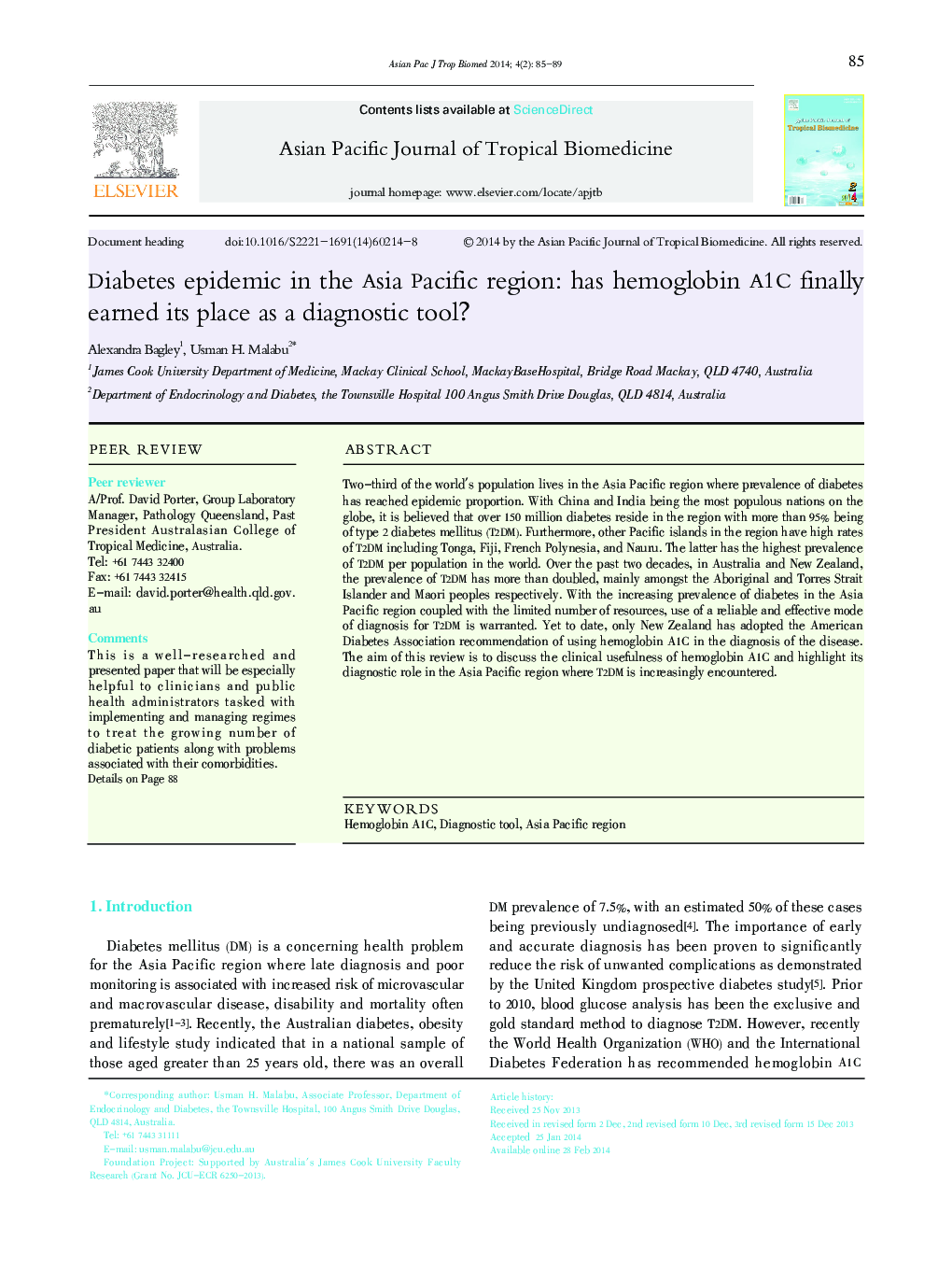| کد مقاله | کد نشریه | سال انتشار | مقاله انگلیسی | نسخه تمام متن |
|---|---|---|---|---|
| 2032694 | 1542892 | 2014 | 5 صفحه PDF | دانلود رایگان |

ABSTRACTTwo-third of the world's population lives in the Asia Pacific region where prevalence of diabetes has reached epidemic proportion. With China and India being the most populous nations on the globe, it is believed that over 150 million diabetes reside in the region with more than 95% being of type 2 diabetes mellitus (T2DM). Furthermore, other Pacific islands in the region have high rates of T2DM including Tonga, Fiji, French Polynesia, and Nauru. The latter has the highest prevalence of T2DM per population in the world. Over the past two decades, in Australia and New Zealand, the prevalence of T2DM has more than doubled, mainly amongst the Aboriginal and Torres Strait Islander and Maori peoples respectively. With the increasing prevalence of diabetes in the Asia Pacific region coupled with the limited number of resources, use of a reliable and effective mode of diagnosis for T2DM is warranted. Yet to date, only New Zealand has adopted the American Diabetes Association recommendation of using hemoglobin A1C in the diagnosis of the disease. The aim of this review is to discuss the clinical usefulness of hemoglobin A1C and highlight its diagnostic role in the Asia Pacific region where T2DM is increasingly encountered.
Journal: Asian Pacific Journal of Tropical Biomedicine - Volume 4, Issue 2, February 2014, Pages 85–89